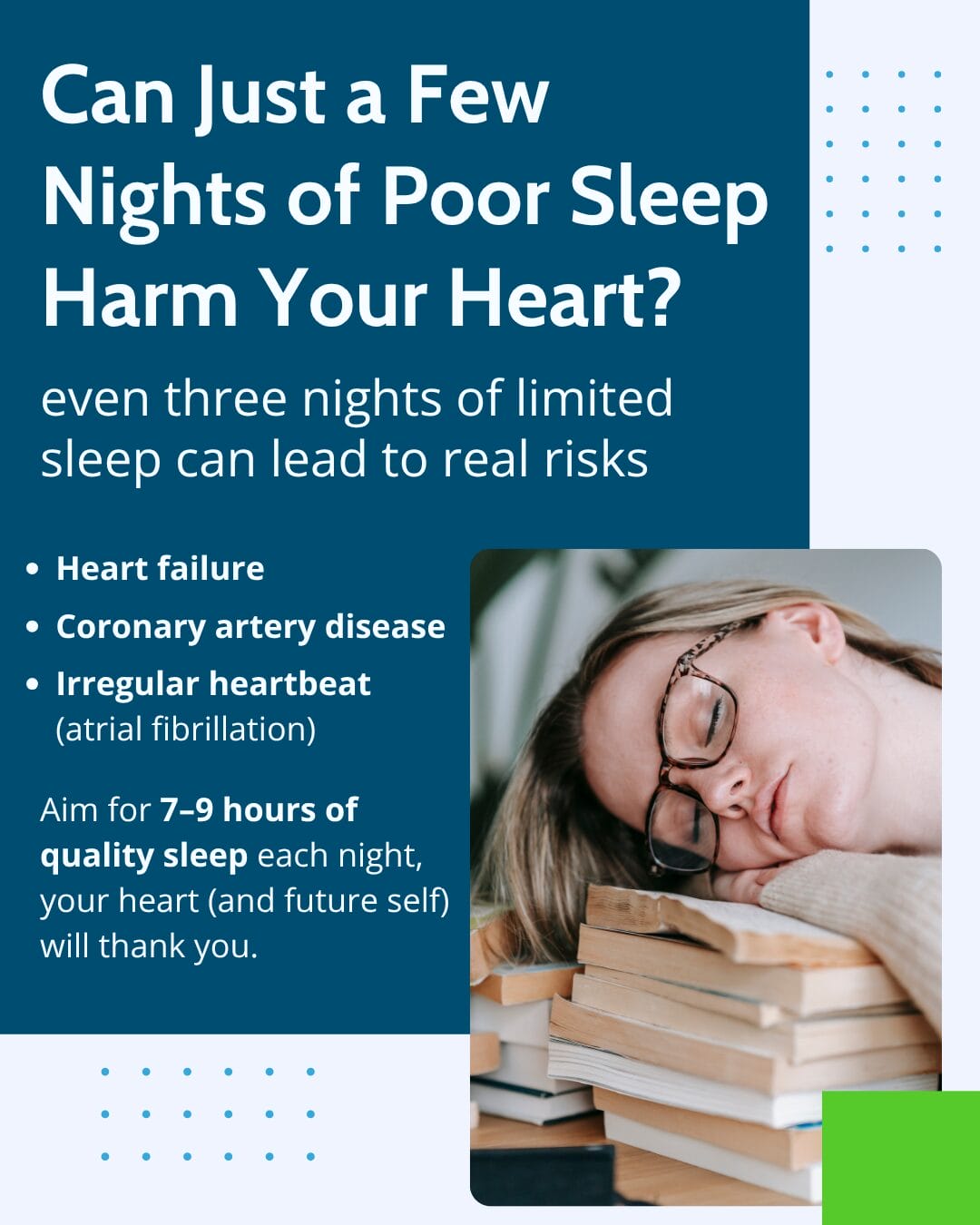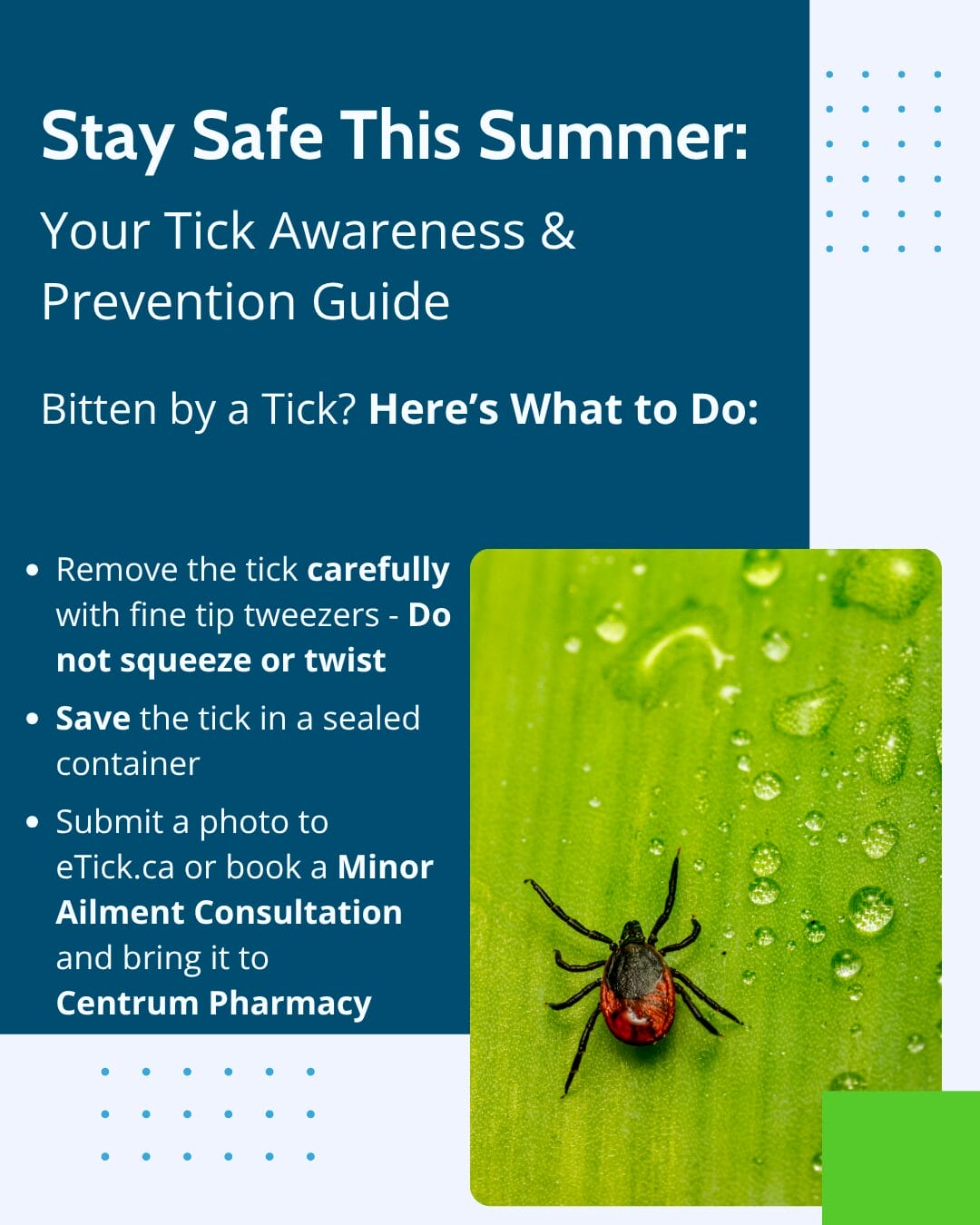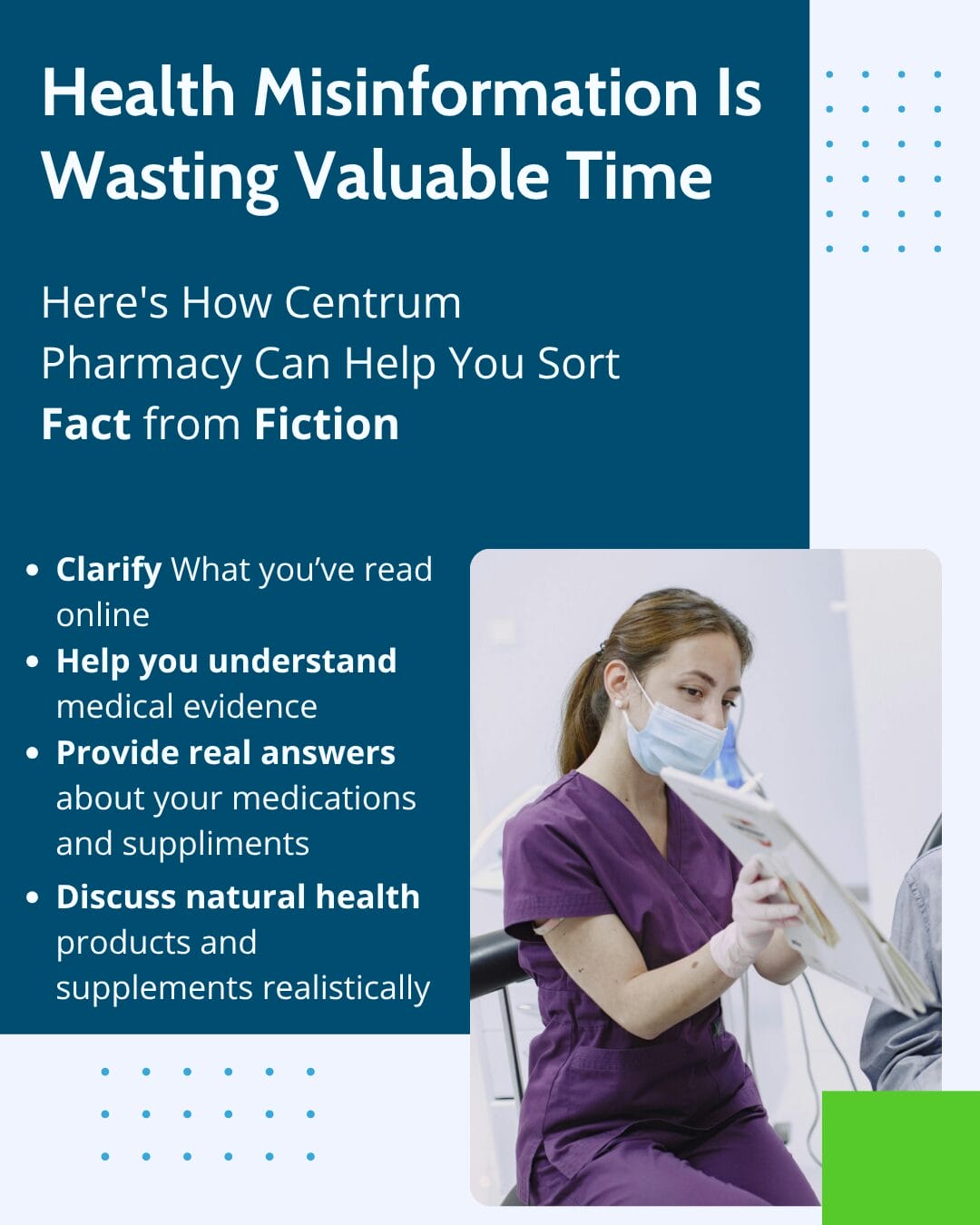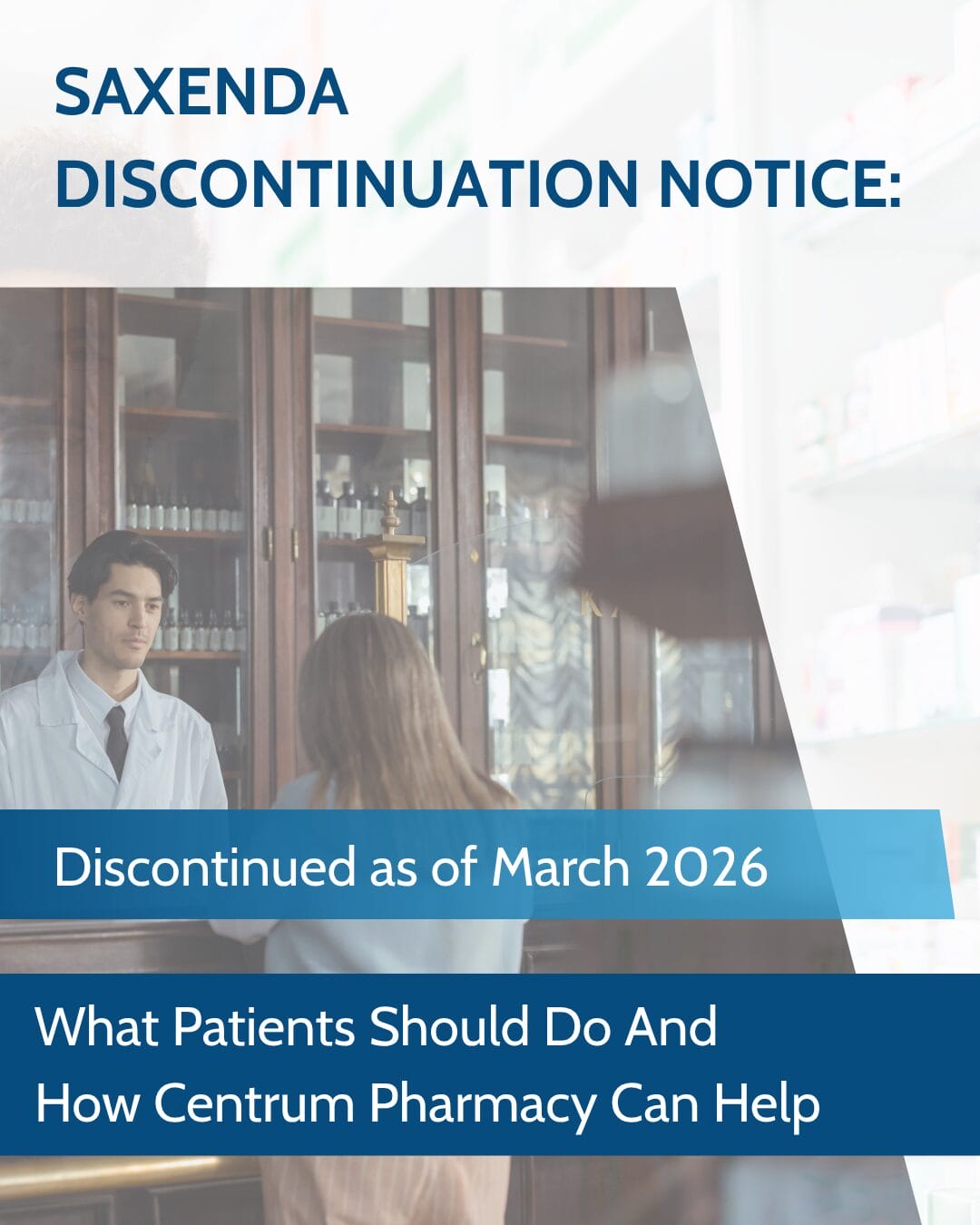At Centrum Pharmacy, we often talk about diet, exercise, and medication when it comes to heart health—but sleep is just as critical.
(more…)Author: Centrum Pharmacy
-

Online Pharmacies Twice as Likely to Fail Regulatory Inspections, Analysis Reveals
An exclusive analysis by The Pharmaceutical Journal has found that online pharmacies are more than twice as likely as their neighborhood brick-and-mortar counterparts to fall short of regulatory standards set by the General Pharmaceutical Council (GPhC).
(more…) -

Stay Safe This Summer: Your Tick Awareness & Prevention Guide
As warm weather invites us outdoors across Ottawa and Orleans, it’s important to be aware of a hidden summer risk: tick bites. While small in size, ticks can transmit serious illnesses like Lyme disease, making prevention essential for families, pet owners, and outdoor adventurers.
(more…) -

Health Misinformation Is Wasting Valuable Time — Here’s How Centrum Pharmacy Can Help You Sort Fact from Fiction
A new national survey has confirmed what many healthcare providers already know: health misinformation is now a full-time problem. In fact, Canadian doctors, pharmacists, and nurse practitioners report spending nearly a full day each week helping patients untangle misleading or outright false health claims — most of which originate online.
(more…) -

Happy Canada Day from Centrum Pharmacy!
Celebrating the Spirit and Achievements of Canadian Pharmacists
As we mark another Canada Day, Centrum Pharmacy is proud to honour the legacy and leadership of Canadian pharmacists—professionals who have shaped not only our profession but the very fabric of Canadian healthcare and community life.
(more…) -
Beyond the Numbers: The Heart of Pharmacy
At Centrum Pharmacy, we believe pharmacy is more than a numbers game — it’s a deeply human profession rooted in trust, care, and compassion.
Sadly, that belief is being tested in many corners of our healthcare system. Across Canada, countless pharmacists working in large corporate chains are overworked and overwhelmed. Pressured to meet quotas and performance targets set by head offices far removed from the realities of patient care, these professionals often find their days dominated by spreadsheets rather than meaningful interactions.
(more…) -
Is Your Acne Cream Safe? Benzoyl Peroxide Products Under Scrutiny for Benzene Risk
A recent recall of benzoyl peroxide acne products has sparked safety concerns due to the potential formation of benzene—a known carcinogen—when products are stored improperly. Learn how to use and store these treatments safely, and explore effective alternatives for clearer skin without added risk.
(more…) -

Saxenda Discontinuation Notice: What You Need to Know
We want to inform our patients and the community about an important update regarding Saxenda® (liraglutide injection).
The manufacturer has announced that the production and commercial availability of Saxenda® will be discontinued as of March 2026. It is important to note that this decision is not due to any safety or quality concerns with the medication.
(more…) -
Type 5 Diabetes: A Newly Recognised Form – How It Compares to Other Types
The International Diabetes Federation has just recognised Type 5 diabetes as a distinct condition. While the name might suggest there are only a few types, diabetes actually encompasses over a dozen forms – each with unique causes and treatment approaches.
Here’s a breakdown of the major types, including this newly identified one:
(more…) -
Celebrating Father’s Day: Honoring Our Everyday Heroes
Father’s Day is a special time to appreciate the incredible men in our lives. Whether they’re our fathers, grandfathers, uncles, or father figures, these amazing individuals deserve our gratitude for their love, support, and guidance. At Centrum Pharmacy, we understand the importance of family and the role fathers play, and we’re here to help you make this Father’s Day special.
(more…)






